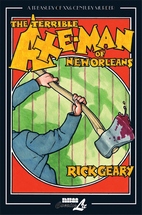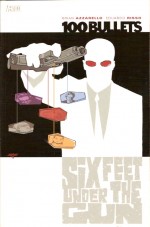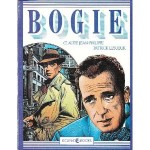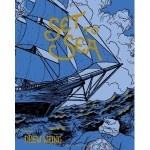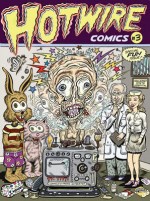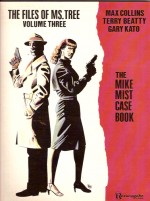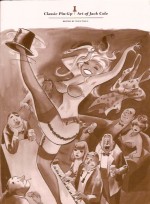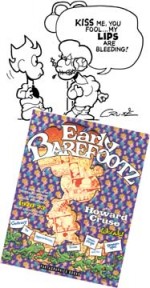
By Howard Cruse (Fantagraphics Books)
ISBN: 978-1-56097-052-1
Howard Cruse’s remarkable cartooning career has spanned decades and encompassed a number of key moments in American history and social advancement.
Beginning as a Hippy-trippy, counter-culture, Underground Comix star with beautifully drawn, witty, funny (not always the same thing in those days – or these, come to think of it) strips, evolving over the years into a powerful voice for change in both sexual and race politics through such superb features as Wendel culminating in his masterful Stuck Rubber Baby – an examination of oppression, tolerance and freedom in 1950s America. Since then he has worked on other writer’s work, illustrating an adaptation of Jeanne E. Shaffer’s The Swimmer With a Rope In His Teeth.
Born in 1944 the son of a Baptist Minister in Birmingham, Alabama, Cruse grew up amid the smouldering intolerance of the region’s segregationist regime, an atmosphere that affected him on a primal level. He escaped to Birmingham-Southern College to study Drama in the late ’60s, graduating and winning a Shubert Playwriting Fellowship to Penn State University.
Campus life there never really suited him and he dropped out in 1969. Returning to the South he joined a loose crowd of fellow Birmingham Bohemians which allowed him to blossom as a creator and by 1971 was drawing a spectacular procession of strips for an increasingly hungry and growing crowd of eager admirers.
Whilst working for a local TV station as both designer and children’s show performer he created a kid’s newspaper strip about talking squirrels, Tops & Button, still finding time to craft the utterly whimsical and bizarre tales of a romantic quadrangle starring a very nice young man and his troublesome friends for the more discerning college crowd he still mingled with. The strips appeared in a variety of college newspapers and periodicals
He was “discovered†by publishing impresario Denis Kitchen in 1972 who began presenting Barefootz to a far broader audience in such Underground publications as Snarf, Bizarre Sex, Dope Comix and Commies From Mars from his Kitchen Sink Enterprises outfit.
Kitchen also hired Cruse to work on an ambitious co-production with rising powerhouse Marvel Comics, attempting to bring a bowdlerised version of the counter-culture’s cartoon stars and sensibilities to the mainstream via the Comix Book – a newsstand magazine. It only ran to a half-dozen issues and although deemed a failure it provided the notionally more wholesome and genteel Barefootz with a larger audience and yet more avid fans…
As well as an actor, designer, art-director and teacher, Cruse’s work has appeared in Playboy, The Village Voice, Heavy Metal, Artforum International, The Advocate and Starlog among countless others, and the tireless storyman found the time and resources to self-publish Barefootz Funnies, two comic collections of his addictively whimsical strip in 1973.
Here in this fascinatingly written memoir of those salad days Cruse movingly recounts those early triumphs and re-presents the strips that began it all, covering 1970-73, and although he has moved on to weightier material since (especially on Gay and Race issues) these splendidly whacky and deliriously charming adventures still stand among his most evergreen creations.
So here, for your consideration and delectation are the gathered exploits and ruminations of thoughtful, Nice Young Man Barefootz, his way-out friend and confidante Headrack, sexually aggressive and very forceful gal-pal Dolly and Glory: the frog-manifesting “Thing Under the Bedâ€, aided and abetted by an ever-changing cast of erudite cockroaches who share his apartment.
As well as the history and Cruse’s reflections, this terrific compilation includes in stunning and meticulous monochrome a selection of Tops & Button gag-panels, ‘The Head Strip’, early strips from campus journal The Crimson-White and The Alternate, syndicated Barefootz from Service Strips, Kitchen Sink single-pagers and the longer stories, ‘Tussy Come Back’, ‘Hint and Run’, ‘Cream of the Genes’, ‘It All Fits’, ‘Suffering Celeste’, the Paperman strips and ‘The Eclipse’, – a classic and unflinchingly engaging treat for any comics fan and grown-up dreamer.
For further information check out Howardcruse.com and track down this and all his other brilliant creations – before Glory turns you into a frog…
© 1970, 1971, 1972, 1973, 1974, 1977 & 1987, 1990 Howard Cruse. All rights reserved.

